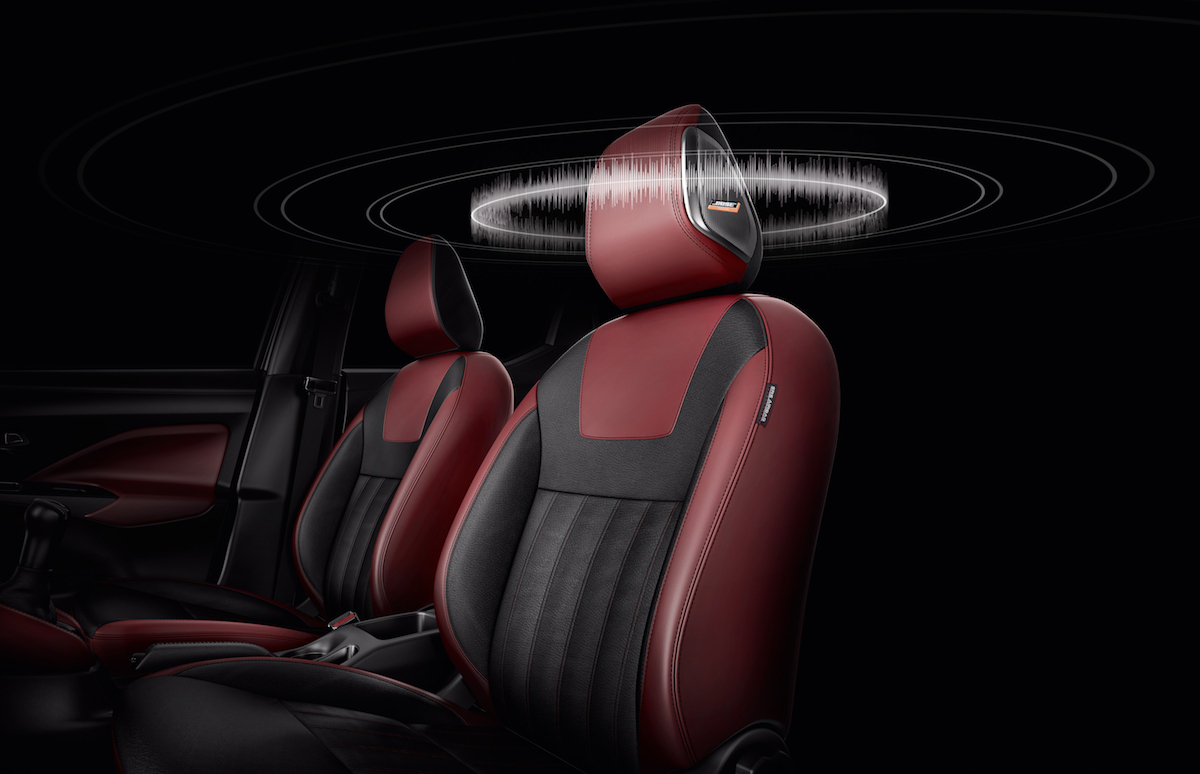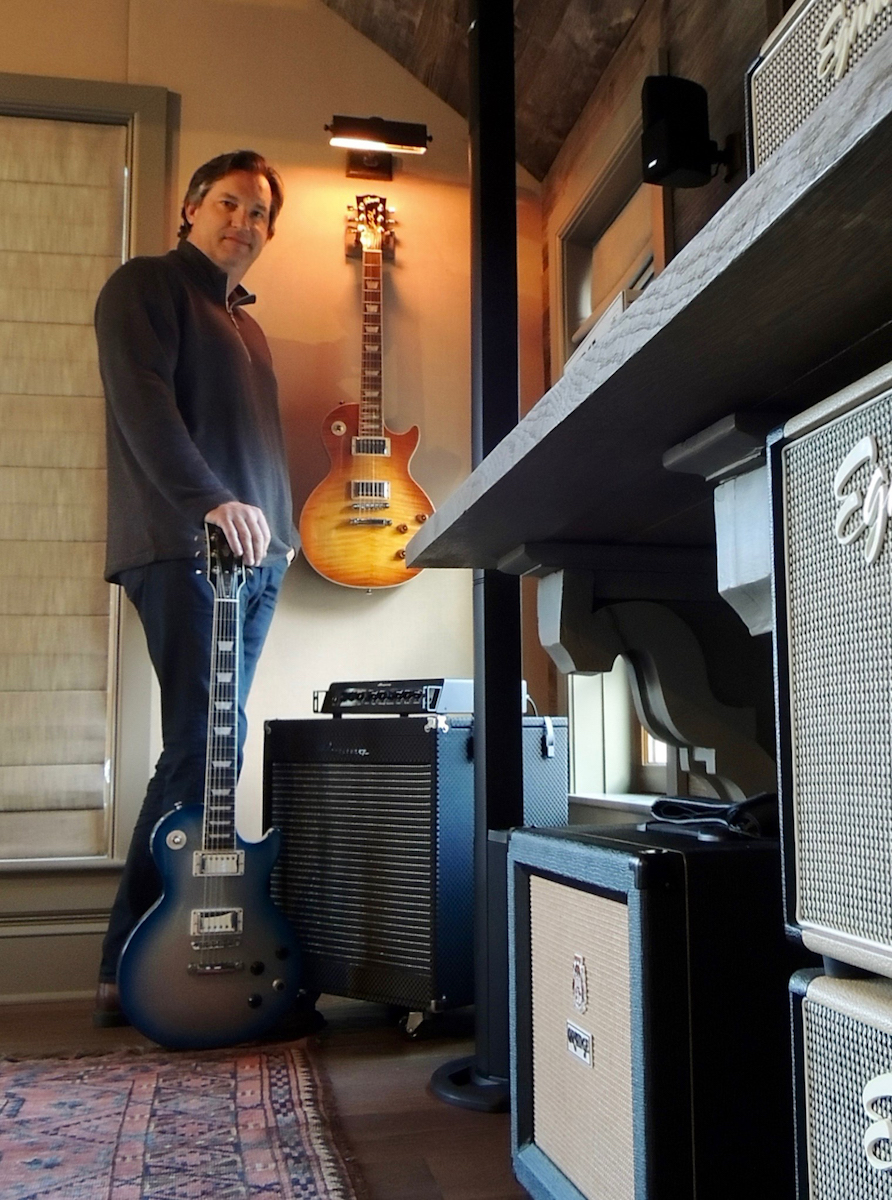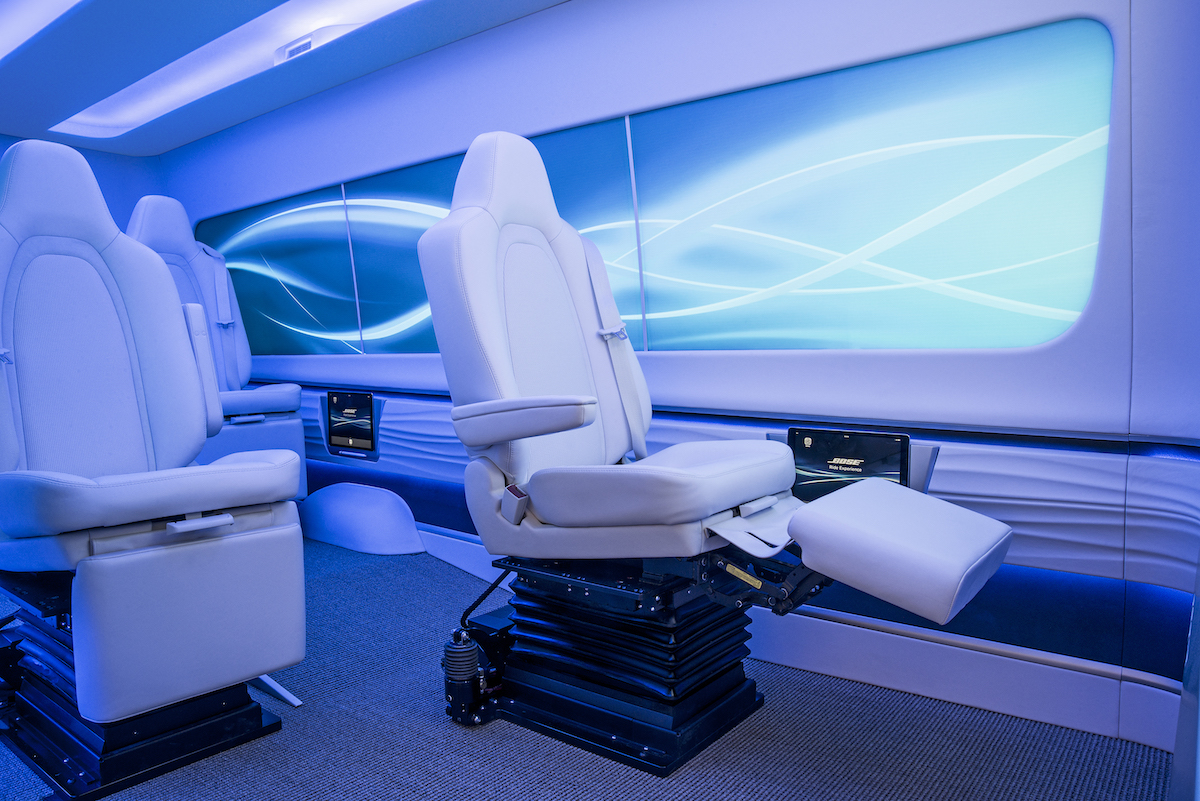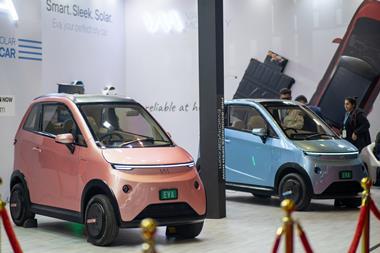We find Marc Mansell, VP for Bose Automotive Systems division at CES 2016 and discover why he’s as excited by
new sound clarity and AC/DC as he is about personal seat suspension systems and cabin sound management
Where do you see the trends in sound?
There’s an expansion in a lot of directions. Musical reproduction in cars will expand through additional features like compressed audio enhancement. That makes the sound ever better, especially when people are ripping music from wherever, we have to take care of that. The amount of engine harmonic cancellation is tricky too. There’s a pretty narrow bandwidth round the engine but there is a lot of road noise from the chassis and tyres so that’s a tougher technical challenge. It’s not just sound quality alone; it’s the whole experience. It’s how you work with the carmaker to integrate the design into the car. How it looks in the car makes it special. Before we were just worried about making sure we had great speakers and electronics to be able to deliver the sound. Now it’s a broader experience.
Is Bose an everyman brand like Apple, or are you looking upmarket?
I think we are always going to be a premium experience. We are not going to be a commodity or an unbranded experience. There is always something better about what we have to offer but also we don’t want to limit ourselves with a certain type of customer. We need to reach more people with the benefits of the things that we do, so as you see a shift in how people want their music ‘on the go’ and our success in portable speakers, Wi-Fi speakers and headphones, from an automotive standpoint, we need to stay broad.
How far away is the idea that every passenger in the car will be be able to listen to something different? What’s the timescale?
It’s hard to say because breaking the vehicle into specific sound zones is a tough technical challenge and has some trade-offs. There has been a lot of discussion about it, primarily because we think these types of systems may be in ride-share pool vehicles – you just want your own space right? – so we might use wearables to enhance that feeling. We might make each zone of the ride-share pool a Bluetooth-connected space where they are able to connect their phone to everything that they want to do. I think all these things are possible. That’s part of what we are doing at CES, talking with industry players about what types of things customers might want to do in a car.

So in near term it’s your own headphones or Bluetooth still?
We can put near-field speakers in our headrests now [like in the new Nissan Micra mk5, above] and can integrate sound locally to the seats.
Beyond sound, your CES demonstrator – the Ride Concept System – looks at the driverless car but isn’t this an area where Bose has little history of or connection with?
Remember we had Project Sound that was inspired by our late founder Dr Bose which posed the question: What’s the best ride possible? Could we get the performance of a sports car and the comfort of a luxury car in the same vehicle through suspension? We did a lot of research to understand that idea and essentially these seating solutions now move that solution closer to the person that’s benefiting from it. We don’t have to hold up the whole car with an overall suspension system. We can hold up the person and keep them stable.
What challenges are there to get this tech into production-ready cars?
We are in production already with heavy duty, Class 8 trucks here in North America. They are wicked, harsh environments. Those trucks are brutal in terms of what they do to their drivers, and the drivers are in them all day, so there’s a fatigue factor, but the second generation of that system is coming out this autumn which will be a more compact package with better capability and broader usage in more vehicles. The concept we’re showing is taking that even closer to being a smaller, lighter package for passenger cars, so we see a path from where we started which was the very harsh abusive environment of a large cab that could fit a unit that big, to eventually engineering that capability down into a package that could fit into a passenger car.

And even when you get to that point and it’s in a passenger situation circa 2025-2030 you’ll be making sure the system sounds alright too?
Of course…life for us is going to be about so much more than the sound quality we’re famous for.
You’re known for entertaining people with great sound quality products so it seems like this a new departure. Is that a reflection of the tough audio market?
I don’t want anyone to think we are somehow abandoning or leaving sounds systems. It’s our core business, it’s what we are known for and in fact we continue to innovate in those areas. There are still challenges but at some point we’re looking to add more value than just making great sound. We solved that problem 30 years ago and that’s our bread and butter. What we are looking to do is layer more ways that we can bring unique value and great experiences around that sound system.
And on a personal level you’re a guitar fan right? You understand the emotional aspect of great sound?
Absolutely. For me this job gave me the ability to connect a career with my passions. I’m a car guy too. I love cars and music. As a musician and a fan of lots of different music, to be able to put those two passions together and think about all the challenges is a lot of fun. We can validate audio when we do our job well too, which means I think about those times when I get in my car and drive home after a day at work and put on my favourite music, especially on a Friday when I’m done with the week. If I want to blow off some steam, I put on some rock and roll and turn it up.

What would be your ‘validation’ tune?
I have a wide variety of tastes but I’m a big fan of AC/DC’s Back in Black album – it’s the first LP I fell in love with.
The trouble with cars is that there isn’t an ‘X marks the spot’ audio sweet spot. You might have four or more passengers to please…
This goes right back to our founder Dr Bose. He was always thinking about problems to be solved and he had this thought that some day we could probably do better sound in a car than in the home. At the time people were like, ‘what are you talking about?’ because at the time sound was generally horrible in cars, but there are some unique advantages to a car. You know where the listeners sit, even though they are off-centre, you know they are locked in. You know where the speaker cabinets are because the carmaker manufactures the car the same way every time. The installation is consistently robust and so even though it’s sort of a challenging environment to design around, you can fix those key variables. You can’t fix those in a house. Everyone’s living room is different, with different surfaces like hardwood floors or carpet or drapes or in how the way furniture is arranged. You can’t even guarantee the customer is going to put the speakers in the right places. I think the systems we are putting out today far and away exceed the expectations that Dr Bose would ever have had himself.
Is the key, getting involved with the carmaker early enough in the process, so they are not just saying ‘there’s your hole, do your best?
Absolutely. In the beginning we would say ‘here are all the speakers. Let’s put them in these places’. It’s become so much more collaborative because even the carmakers have challenges, like with hybrid cars and packaging the batteries somewhere they never had to package before. They can be like, ‘See that bass box in the back of the car. Take that out. We’ll put a battery in there’. So we have to constantly innovate how we integrate audio systems into vehicles. That 34-speaker Panaray system in the Cadillac CT6, there’s only one speaker that’s larger than 100mm in diameter. Thirty three of them are small. It’s all about where they are placed and integrated to create that big sound.

Do full-electric powertrains pose different audio problems, or help?
For the most part EVs have some benefits. The car is quieter because there’s not any combustion engine but there can be new challenges. You start to unmask other noises in the car that need to be taken care of. Even now, in hybrids as the powertrain switches between electric motor and the internal combustion engine, there are different transitions of sound. So, when you asked about moving beyond sound, that presented itself as a problem where we could take our expertise on acoustics and systems control and actually bring a solution.
Do you spend as much time making great sound as cancelling it now?
You’d be amazed how much stuff is going on in each speaker. The same speaker will deliver sound for your music and the cancellation signal for the engine and in the headrest speakers. We are bringing new capabilities like being able to place your navigation prompts or warnings in the location that makes sense. If the satnav says ‘turn left ahead’ we can actually make the sound sound like it’s coming from the left side of the car as compared to the right. Or let’s say an emergency vehicle is approaching from behind, we can have it sound like it’s approaching from behind you. We have the capabilities to steer sound. Now we need car makers to work with us to be able to give us the signals of where it’s happening. We believe that that will help people process everything that is going on in the car. These new benefits aren’t really about sound quality, but cabin sound management.







































